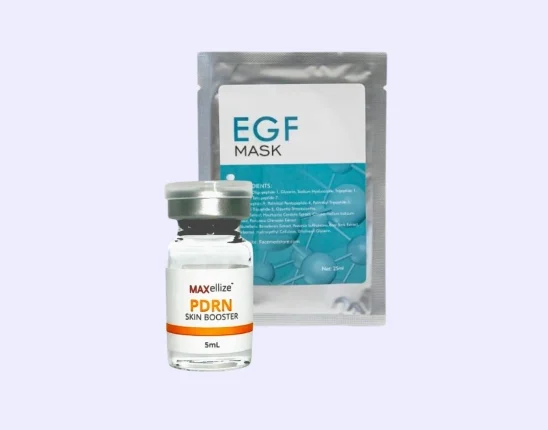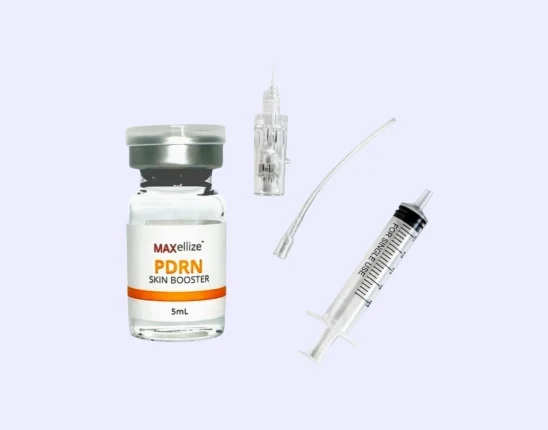In humans and other living organisms, proteins encoded by genes play several roles in the functioning of the body. Often, the expression level of these genes dictates disease progression or may indicate a poor prognosis for a certain disease state. An example of a gene is the fibroblast growth factor-9.
So what’s fibroblast growth factor-9 (FGF-9)? FGF-9 is a gene that encodes glia-activating factor, a protein belonging to the fibroblast growth factor (FGF) family. It plays a role both in normal body functioning and in disease causation, making it a promising therapeutic target to combat diseases.
What’s Fibroblast Growth Factor-9?
Fibroblast growth factor-9 (FGF-9) is a gene that was previously discovered from human glioma cells. It’s dependent on the Sonic hedgehog (Shh) signaling, a signaling pathway involved in embryologic development.
Its expression tips the balance towards cell growth and development by upregulating factors favoring it, such as glial cell line-derived neurotrophic factor (GDNF) and the anti-apoptotic marker, Bcl-xL while down regulating the factors against it, such as cleaved caspase 3.
FGF-9 also encodes for the glia-activating factor, a member of the fibroblast growth factor (FGF) family, which is involved in glial cell growth and development.
Role Of FGF-9 Expression On Normal Body Functioning
Some aspects of normal body functioning are dependent on the expression level of the fibroblast growth factor-9 (FGF-9). These functions include sex determination, brain development and functioning, heart development, lung development, and skeletal development.
1) Sex Determination
FGF-9 plays a role in sex determination by also playing a role in gonadal and genital differentiation. It acts as a signaling factor at tyrosine kinase receptors. It also plays a role in embryogenesis (the process of development of an embryo from a zygote).
It does so by acting upon the biological processes that occur within it, such as implantation, angiogenesis, and morphogenesis. FGF-9 is a highly conserved gene across mammalian species and is hypothesized to play a role in sex determination and the development of gonads and genitals.
Murine studies show that it’s a downstream target of Sry to promote cell growth and differentiation of the components (mesenchymal cells, mesonephric cells, and Sertoli cells) of the embryonic testis.
Its expression thus determines if a mouse embryo becomes a male or a female because its presence causes the development of the embryonic testis, even in individuals with Y chromosomes (remember that individuals with XY chromosomes are classified as male).
2) Gonadal And Genital Development
In women, FGF-9 is hypothesized to be an endometrial stromal growth factor because of its elevated expression during the late proliferative phase of the menstrual cycle. It’s also hypothesized to be regulated by estrogen because this hormone is the one involved in the late proliferative phase.
It’s also observed that there’s no difference in the early proliferative phase and the entire secretory phase of the menstrual cycle in association with progesterone levels, suggesting that it has no effect in such.
3) Brain Development And Functioning
It’s hypothesized that FGF-9 has a role in brain development and function because of the differential expression in different brain regions in individuals. In fact, through the use of adipose-derived stem cells (ASCs), a study has demonstrated the role of FGF-9 and its receptor (fibroblast growth factor receptor, FGFR) in promoting peripheral nerve regeneration.
4) Heart Development
FGF-9 knockdown experiments in mice were able to demonstrate the significance of FGF-9 in the development of cardiac myocytes (heart muscles). Results of the study show that the proliferation of cardiac myocytes was stunted, resulting in a smaller heart in FGF-9 knockout samples, suggesting that FGF-9 is an important growth factor in the development of the embryonic heart.
5) Lung Development
The development of lung epithelial tissue is also dependent on the FGF-9 expression level. Pulmonary mesenchymal stem cells, especially those in the pseudoglandular and canalicular stages are extensively studied. Mice with FGF-9 deletion are shown to have very small, underdeveloped lungs with reduced mesenchyme and few branch points, that they die at birth.
6) Skeletal Development
Members of the FGF family, including FGF-9, are said to be involved in chondrogenesis (the formation of cartilage) and endochondral ossification (the cartilage is replaced by bones while the body increases in length). Mice with heterozygous mutation in the FGF-9 are noted to have difficulty in bone repair after an injury.
Role Of FGF-9 Expression On Disease Causation
Mutations such as changes in the components that code for the FGF-9 gene, deletion of the gene itself, or overexpression of the gene results in disease states such as psychological disorders, multiple synostoses syndrome, and cancer.
1) Psychological Disorders
Elevated levels of hippocampal FGF-9 are implicated in the disease causation of major depressive disorder (MDD), with an observation of an increase in anxiety-like and depression-like behavior. It’s observed via microarray and qRT-PCR, indicating that this gene plays a critical role in the pathogenesis of the said psychiatric disorder.
On the other hand, FGF-2, another member of the FGF family, is negatively correlated with the expression level of FGF-9, in that an increase in FGF-9 results in a decrease in FGF-2, indicating that FGF-9 and FGF-2 may play opposite roles in the disease causation of MDD.
Similarly, FGF-9 and FGF-2 are also both implicated in the disease causation of Huntington’s Disease. These 2 genes both exert protective effects to the HD striatal cells, causing their continuous growth and proliferation.
2) Multiple Synostoses Syndrome
Multiple synostoses syndrome (SYNS) is a congenital disorder characterized by multiple joint fusions, resulting in connected hands and toes, and conductive hearing loss. Patients with this disease also have a broad, tubular nose and thin upper vermillion, and their heads are dislocated.
It was demonstrated in a study that this disorder arose due to a missense mutation (mistake in encoding the DNA in which the wrong amino acid is incorporated in the genetic material), specifically a point mutation (S99N) in FGF-9. Signaling in developmental limb joints is disrupted due to the disrupted FGF9/FGFR/heparin interaction brought by the change in conformation of FGF-9 which is the result of the point mutation.
3) Cancer
Abnormal expression of FGF-9 is linked to the formation of cancer cells in certain organ systems. This is due to the uncontrolled growth of tissues and increased cell turnover, leading to hyperplasia that’s usually a prerequisite in the development of cancer. Cancers associated with the overexpression of FGF-9 include non-small cell lung cancer, hepatocellular carcinoma, gastric cancer, colorectal cancer, ovarian endometrioid adenocarcinomas, and cervical cancer.
- Non-Small Cell Lung Cancer – Non-small cell lung cancer is a cancer of the epithelial cells of the lungs. A study has observed that 10% of specimens collected from patients with non-small cell lung cancer (NSCLC) have elevated levels of FGF-9. It was also demonstrated that longer survivability is expected in patients with low FGF-9 expression compared to that with high FGF-9 expression.
- Hepatocellular Carcinoma – Hepatocellular carcinoma is a type of malignancy of the liver cells. Hepatic stellate cells or stromal myofibroblasts were identified as the origin of FGF-9 in human HCC cells, and these cells are associated with liver fibrogenesis and hepatocarcinogenesis. The poor prognosis of hepatocellular carcinoma (HCC) is said to be predicted by high expression levels of FGF-9. Other factors affected by stroma-related FGF-9 in HCC include tumorigenicity and sorafenib (the drug commonly used in the management of HCC) resistance.
- Gastric Cancer – Gastric cancer is a type of malignancy that begins in the stomach. In a study, it was observed that the secretion of FGF-9 by cancer-associated fibroblasts (CAFs) may be the reason behind the continuous proliferation and invasiveness of gastric cancer cells.
- Colorectal Cancer – Colorectal cancer is a type of malignancy that may start in the colon or the rectum. A study has shown that overexpression of FGF-9 is prevalent in colorectal cancer cells, compared to normal colon cells. It has also demonstrated that silencing FGF-9 resulted in the reversal of cisplatin resistance of colorectal cancer, as this resistance is said to be caused by impaired signaling pathways.
- Ovarian Endometrioid Adenocarcinomas – Ovarian endometrioid adenocarcinoma (OEA) is a type of tumor affecting the ovaries, the organ of the female genital anatomy that produces the ovum. A study has identified FGF-9 as a key factor that dictates the cancer phenotype of OEA, because of certain findings such as it being mitogenic, stimulatory to invasiveness, and promotive for tumor neoplasia.
- Cervical Cancer – Cervical cancer is the 4th most common malignancy in the United States. It’s a malignancy affecting the cervix, a part of the female genital tract that connects the uterus from the vagina. It was demonstrated in a study that the downregulation of miR-187 is associated with poor prognosis in cervical cancer patients. miR-187 is said to exert anti-proliferative and pro-apoptotic properties in cervical cancer cells. These are worth noting because FGF-9 is said to be a downstream target of miR-187 in cervical cancer cells and is important for the tumor-suppressing effect of miR-187 on cervical cancer cells.
FGF-9 Expression As Therapeutic Target
As seen in the previous discussion, the expression of FGF-9 plays a role in both the normal functioning of the body and the causation of some disease states. As such, it’s only intuitive to think that the therapeutic potential of FGF-9 stems from its known biological properties.
- Through the study on how FGF-9 promotes the functional differentiation of adipose-derived stem cells to Schwann cells, it was also demonstrated that the FGF9-NLCs may have therapeutic benefits because of the biological properties of the FGF-9-EGFR-Akt pathway.
- The observed association of FGF-9 with affective behavior provides the perspective that it may be a good therapeutic target for the optimal regulation of mood and affect. Particularly, it may be used to address major depressive disorder.
- While it’s not yet demonstrated in humans, animal models provide perspective on the potential of FGF-9 as a therapeutic target in cardiovascular diseases, particularly FGF signaling as a stem cell therapy for heart failure.
- The observed drug resistance, enhanced tumorigenicity, and aggressiveness of cancer cells with high expression levels of FGF-9 put into perspective its promising use as a diagnostic or prognostic marker and therapeutic target in cancer, particularly those largely affected by FGF-9 namely non-small cell lung cancer, hepatocellular carcinoma, colorectal cancer, ovarian endometrioid adenocarcinomas, and cervical cancer.
PEP Factor: The Best Formulation Containing Growth Factors And Other Natural Ingredients
Fibroblast growth factor-9 (FGF-9) is a gene that affects and dictates the development and functioning of several organ systems. Its expression level has an important role on normal biological functioning, such that abnormal expression may lead to disease states such as psychological disorders and cancer.
Similarly, FACE Med Store’s PEP Factor can also affect the body by promoting beneficial effects such as scalp and skin rejuvenation. It contains basic fibroblast growth factor (bFGF) which has roles in cellular growth and proliferation and copper peptide which has antioxidant properties in that it can neutralize the destructive effects of the reactive oxygen species (the deleterious products of oxygen).
Aside from these active ingredients, the PEP Factor also contains other natural ingredients such as peptides (smaller molecules of proteins) and nutrients that may help improve the appearance of thinning hair and may also help brighten the skin.
PEP Factor is also applied topically so it has minimal side effects such as redness in the area where it’s applied. It may be safely added as a complement to other treatment modalities such as microneedling for the observation of more optimal benefits.
Shop For High-Quality Medical Products At FACE Med Store
The expression of fibroblast growth factor-9 plays a role in normal bodily functions such as in growth and development of organs, and the causation of diseases such as psychological disorders and cancers. It thus has promising applications as a therapeutic target to develop drugs and therapies for these diseases.
At FACE Med Store, we offer high-quality medical products which are products of previous studies aiming to uncover truths about diseases. We also strive to be transparent about the products we sell through our friendly staff and excellent customer service. Contact us today at (800) 770-9083 or browse through our online store to know what products will work best for you.















